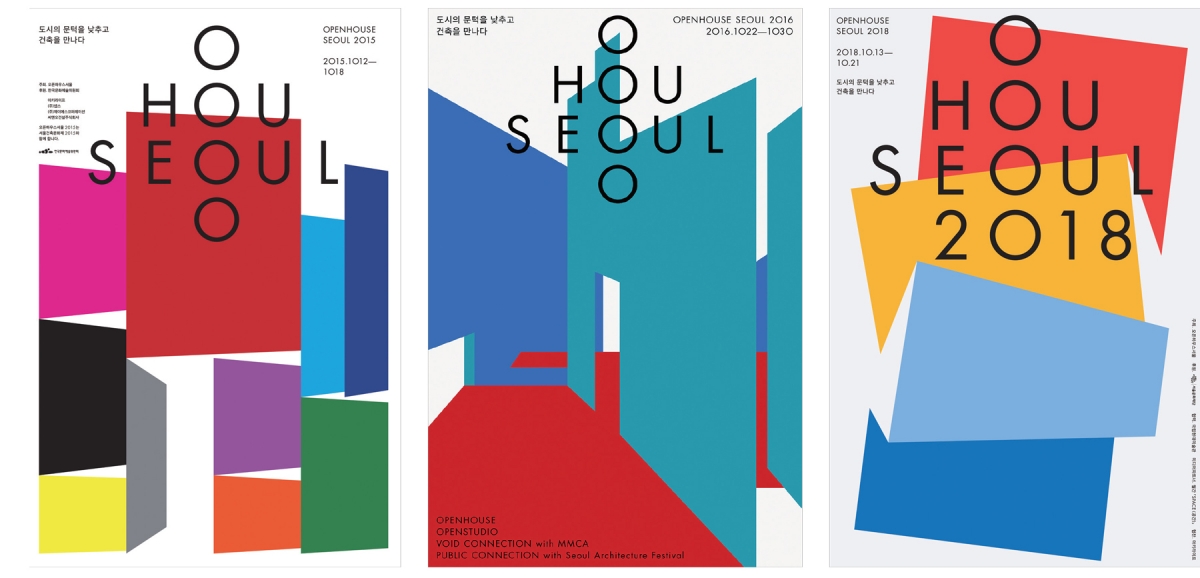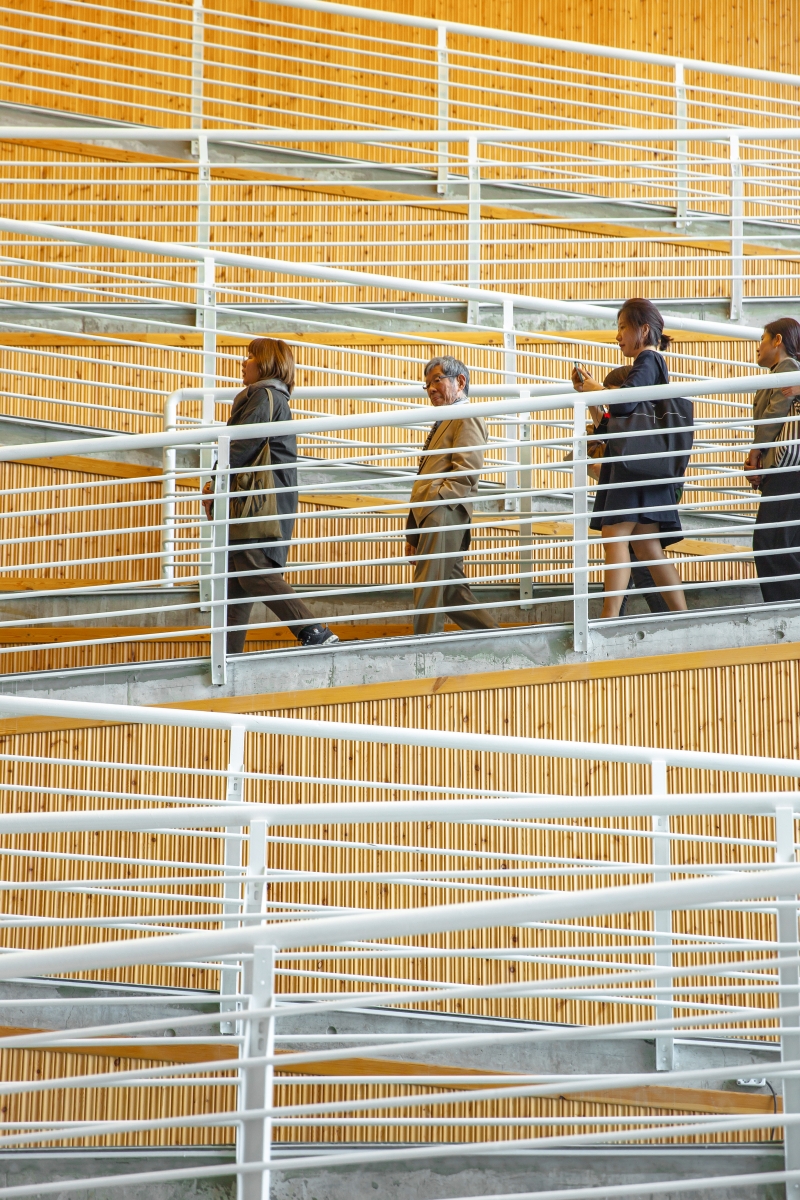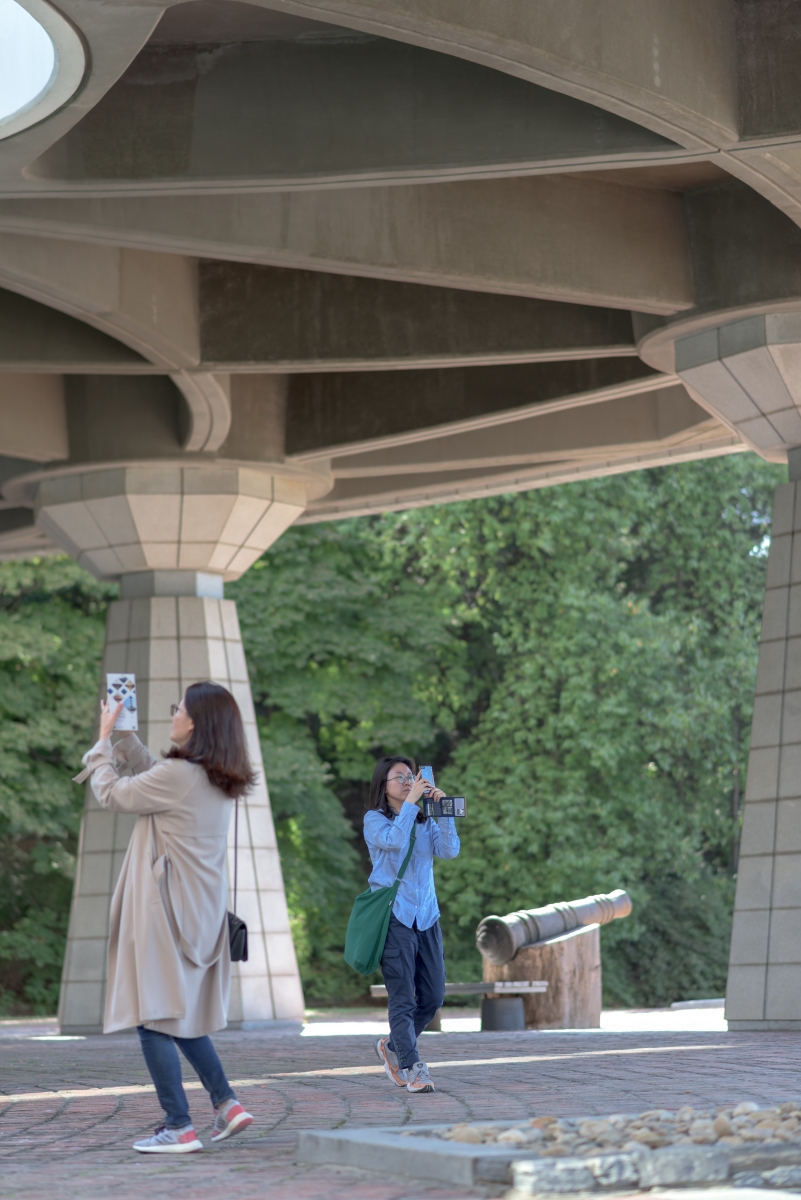OPENHOUSE Seoul
Leader | Lim Jinyoung
Member | Choon Choi, Hwang Jie-Eun, Kim Hyungjin, Youm Sanghoon, Choi Jini, Kim Sangho, Im Jean, Bae Jiun
Period of operation | Feb. 2012 – ongoing
Main programme | opening and visiting architecture/studio, talk and forum
Operational aims | To make people understand the architecture and city environments by entering the various places.
Website | www.ohseoul.org

interview Lim Jinyoung principal, OPENHOUSE Seoul × Kim Yeram
Kim Yeram (Kim): Please tell us about the overall criteria when selecting buildings and how you planned categories.
Lim Jinyoung (Lim): When planning a programme, a special theme is first selected, considering social issues or topics discussed at the time through connected research, and may include an architect as part of a special feature that year. Through architectural journals, academic periodicals, and association papers, research is conducted on buildings discussed from a critical perspective alongside the pursuit of additional research. However, as the key to OPENHOUSE Seoul is to open the gates wide, the planning therefore depends on the permission given by our clients. (laugh) So, I always plan these categories with an open mind.
Kim: I would like to know more about what people have asked of this platform.
Lim: The limited number of participants is one thing we find unsatisfactory. It is still difficult to form a consensus about the opening of private spaces in our society. Therefore, it is not easy for the client to approve an unspecified number of visits. If there are options such as an open admission with a fixed number of time slots or an advance booking policy with a limited number of participants, clients tend to opt for the latter.
Kim: Your platform now runs under the observation of a temporary short-term board of operations. What measures are in place to ensure the sustainability of your platform?
Lim: Unfortunately, OPENHOUSE Seoul was managed by drawing on the proceeds garnered from personal projects conducted over the past nine years up to the preparation period of OPENHOUSE Seoul, and now the Seoul Foundation for Arts and Culture’s support provides a strong source of support. The office operates for only about six months, through the voluntary participation of the directors, and so it is hard to further expand the scale and breadth of planning. If the system that works year-round with the city government like OPENHOUSE New York is constructed, we think we can continue to run the programme with more people who have interest in cities and architecture.
Kim: You have launched video programmes under the theme of ‘The Space in Home’ How will OPENHOUSE Seoul show architectural content during the Coronavirus Disease-19 (COVID-19) crisis?
Lim: By focusing more on the subject than on the scale, we tried to expand ‘The View of the House’ and how it had changed in the era of COVID-19. The intention is to send kind regards to the participating houses and to rediscover the spaces of a house. Giraffe Pictures is filming a house that will raise issues about different spaces and functions guided by two keywords: diversities of house and transfer space. Of course, Features with Architects and Online Open Studios will also be held. Until now, there have been a limited number of participants, but this is also an advantage as more people can experience all the house has to offer through the video.


Open House Worldwide
Leader | Phineas Harper
Period of operation | 2010 – ongoing
Main programme | 48-hour (virtual) festival
Website | www.openhouseworldwide.org
The core value behind the open house programme lies in experiencing outstanding buildings and advancing our understanding of the city in which we live. To understand architecture is to understand the history of the city, to read into the background and cultural capacity of our time, and to experience the value of a space organised around outstanding buildings. The educational impact of the festival is the potential to create a collaborative vision of our urban environment. This is because today’s urban issues require an active understanding and intervention. Established in London in 1992 by Victoria Thornton, Open House is an architectural festival that promotes the values of, appreciates, understands, and learns about architectural excellence, and showcases good design including those both modern and historical. It is also an architectural education event for citizens who enjoy the city. Based on first-hand experiences of architecture, this festival helps citizens to recognize their city’s way of determining how we live. To show that a city can improve people’s lives, it provides opportunities to experience good architecture, governing the discourse, bridging the gap between experts and users, and recognising that citizens are the protagonists who determine the city environment.
The Open House, which began life in London, has now expanded 20 years later into an international event held in 42 cities around the world. In addition to the programme of visiting the building, the open house has established itself as a professional and citizen-friendly event, discussing urban issues while planning a wide variety of events, forums, and exhibitions. In particular, Open House New York, a major city along with London, is representative of conducting ‘the Urban Systems Series’, which presents occasions every year to research urban policy and communicate with experts and citizens. It serves as a platform to help understand urban issues such as ‘The Moving City’ and ‘Spaces of Justice’, and to help experts and citizens participate in and intervene in their local context through open houses, tours, forums, talks, and exhibitions.Ironically, the COVID-19 pandemic has this year halted the opening and real time experience of buildings, but made all the cities of Open House Worldwide united under one common foundation, which had so far focused on individual events. This year, events in each city, which are held online and virtually, will be on one platform called the Open House Worldwide Festival. This festival, which runs from the 14th to 15th of November, will allow us to meet cities around the world online, even if it does not reach the impression of direct experience. Open House Seoul, which has been under discussion with the founders since 2014, officially join Open House Worldwide this year and participate in online festivals in cities around the world.




